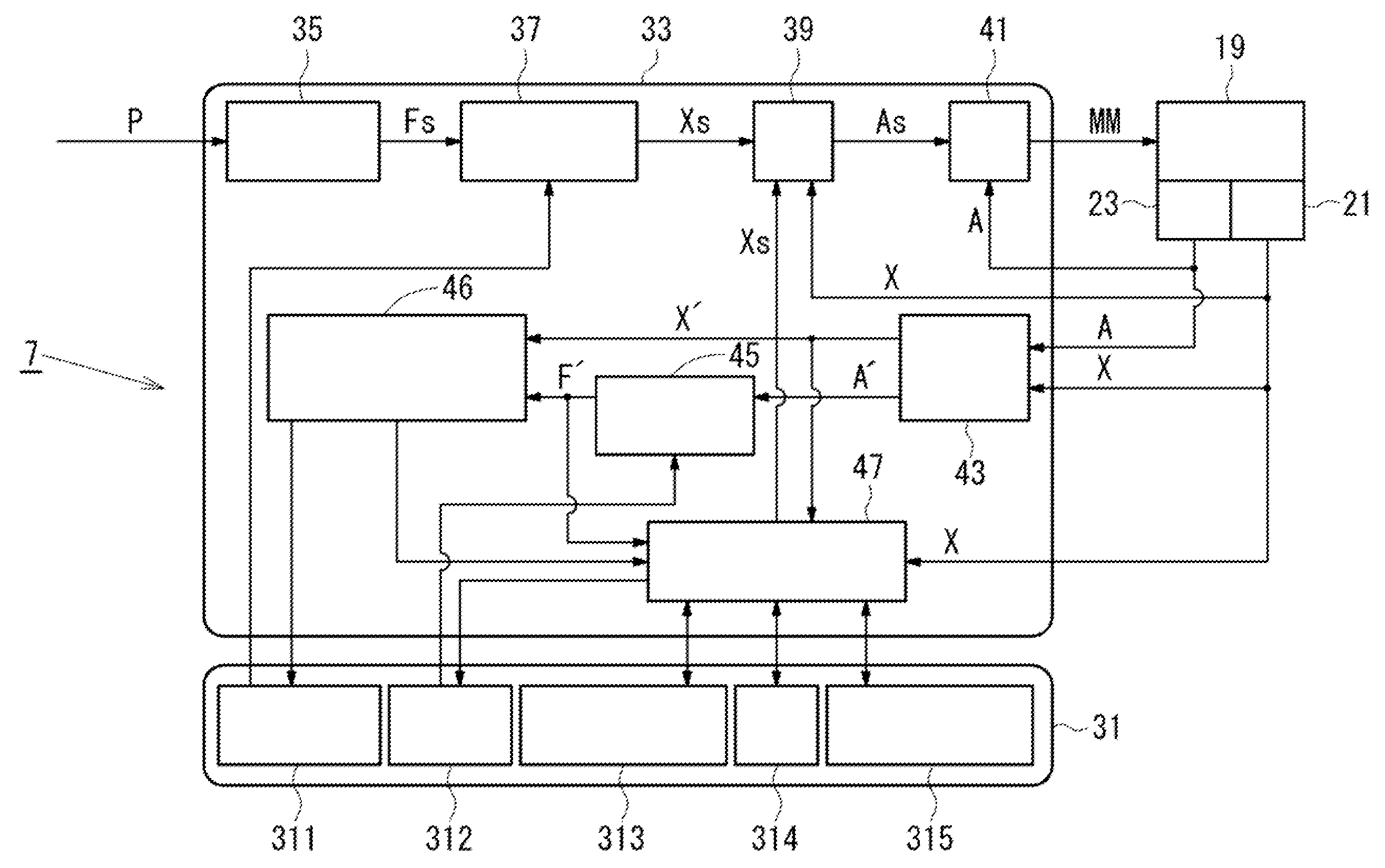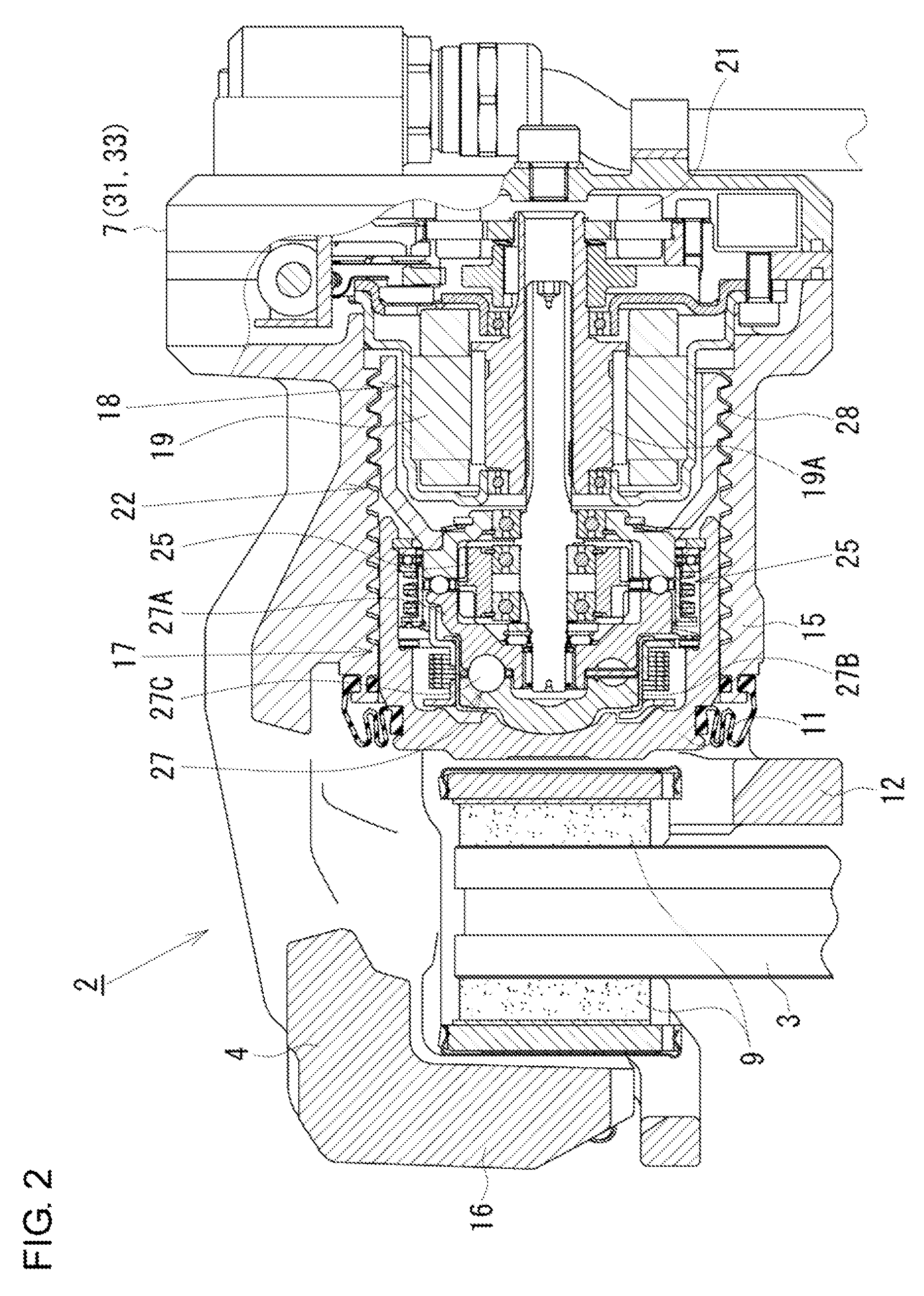Electric brake apparatus
a technology of electric brakes and brake pads, which is applied in the direction of braking systems, braking components, transportation and packaging, etc., can solve the problems of reducing vehicle stability, unable to accurately calculate the thrust force value of electric brakes, etc., and achieve the effect of maintaining predetermined control accuracy
- Summary
- Abstract
- Description
- Claims
- Application Information
AI Technical Summary
Benefits of technology
Problems solved by technology
Method used
Image
Examples
first embodiment
[0026]In the following, an electric brake apparatus according to a first embodiment of the present invention will be described with reference to the accompanying drawings. FIG. 1 is a block diagram illustrating an overall configuration of an electric brake apparatus according to the present embodiment. As illustrated in FIG. 1, the electric brake apparatus 1 according to the present embodiment includes electric calipers 2 (only one of them illustrated) respectively disposed at the front, rear, right, left wheels of an automobile which is one example of a vehicle, and a controller 7 (control unit) configured to supply a control signal to the electric calipers 2 based on input signals from various kinds of sensors configured to detect vehicle conditions such as a vehicle speed and a vehicle acceleration. The controller 7 receives operation information (for example, a stroke and an operation force) of a brake pedal 5, which is detected by an operation sensor 6A. The operation sensor 6A...
second embodiment
[0089]Next, a second embodiment will be described with reference to FIG. 18. A difference of the present embodiment from the first embodiment is that; in the present embodiment, the controller 7 directly converts a thrust force instruction into an electric current instruction As to control the electric motor 19, instead of converting a thrust force instruction into a rotational position instruction Xs. In the following, like components will be identified by the same reference numerals as those in the first embodiment, and only different features will be described in detail.
[0090]In the present embodiment, the controller 7 includes an ECU 33A and a RAM 31A illustrated in FIG. 18. In the ECU 33A, the thrust force instruction Fs issued from the pedal operation amount / thrust force instruction conversion unit 35 is directly converted into the electric current instruction As by a thrust force instruction / electric current instruction conversion unit 37A, and is transmitted to the electric ...
PUM
 Login to View More
Login to View More Abstract
Description
Claims
Application Information
 Login to View More
Login to View More - R&D
- Intellectual Property
- Life Sciences
- Materials
- Tech Scout
- Unparalleled Data Quality
- Higher Quality Content
- 60% Fewer Hallucinations
Browse by: Latest US Patents, China's latest patents, Technical Efficacy Thesaurus, Application Domain, Technology Topic, Popular Technical Reports.
© 2025 PatSnap. All rights reserved.Legal|Privacy policy|Modern Slavery Act Transparency Statement|Sitemap|About US| Contact US: help@patsnap.com



